Table of Contents
Come join us now, and enjoy playing your beloved music and browse through great scores of every level and styles!
Can’t find the songbook you’re looking for? Please, email us at: sheetmusiclibrarypdf@gmail.com We’d like to help you!
Just Friends (Jazz Standard guitar chords and TABS sheet music, Noten, partitura, 楽譜)
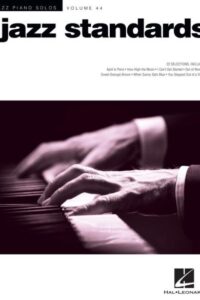
Best Sheet Music download from our Library.

Just Friends: The Jazz Standard Born from Heartbreak, Reborn in Bebop.
Few jazz standards possess the dual identity and enduring appeal of “Just Friends.” It began life as a sentimental 1930s pop ballad, faded into relative obscurity, and was spectacularly resurrected two decades later by the revolutionary force of Charlie Parker, transforming it into an uptempo bebop anthem and a harmonic playground for generations of jazz musicians. Its journey encapsulates the evolution of jazz itself.
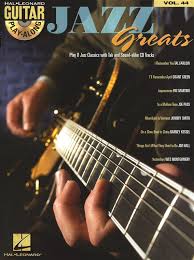
Please, subscribe to our Library.
If you are already a subscriber, please, check our NEW SCORES’ page every month for new sheet music. THANK YOU!
I. History: From Ballad to Bebop Battleground
- Conception (1931): Composed during the depths of the Great Depression by John Klenner (music) with lyrics by the prolific Sam M. Lewis. The song emerged from personal heartbreak; Klenner reportedly wrote it after a painful romantic split, pouring his melancholy into the melody. The original title was simply “Just Friends,” sometimes stylized as “(Just Friends).”
- Initial Popularity (1931-1932): The song found immediate success. The first significant recording came from Red McKenzie and His Orchestra (featuring the unique “comb” playing of McKenzie and the vocals of Scrappy Lambert) in late 1931. This version, and others like Russ Columbo’s crooning rendition, cemented its status as a hit pop ballad of the era. The lyrics perfectly captured the bittersweet resignation of a romance cooling into mere friendship (“Just friends, lovers no more…”). It was featured in the 1931 film The Big Broadcast (though reportedly cut from the final print).
- The Long Fade (1930s-1940s): Like countless pop songs of its time, “Just Friends” gradually faded from the mainstream spotlight after its initial burst of popularity. It wasn’t completely forgotten by musicians, but it certainly wasn’t a fixture in the developing jazz repertoire of the swing era.
- The Bebop Resurrection (1949): The song’s destiny changed irrevocably on November 4, 1949. Charlie Parker, the architect of bebop, walked into a recording studio with his “With Strings” ensemble. For one track, however, he stripped back to a quintet format (Parker, Kenny Dorham-trumpet, Al Haig-piano, Tommy Potter-bass, Roy Haynes-drums). They launched into “Just Friends” at a blistering tempo, completely transforming the languid ballad into a high-octane vehicle for improvisation. Parker didn’t just play the tune faster; he fundamentally reimagined its harmonic structure, adding layers of sophisticated chord substitutions and chromaticism that became the new standard interpretation. This recording, released on the album Charlie Parker with Strings, became legendary. Parker also recorded a famous contrafact (a new melody over the same chord changes) called “Celebrity” in 1952, further embedding the progression in the bebop lexicon.
- Enduring Legacy (1950s – Present): Post-Parker, “Just Friends” shed its ballad skin almost entirely within the jazz world. It became a quintessential jam session tune, a test piece for improvisers due to its challenging modulations and fast tempos, and a favorite for countless recordings across styles – from hard bop and cool jazz to vocal interpretations and modern explorations. Its complexity and inherent swing ensure its continued relevance.
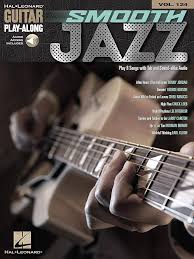
Browse in the Library:
Or browse in the categories menus & download the Library Catalog PDF:
II. The Composers: Klenner & Lewis
- John Klenner (1899-1955): Primarily a songwriter, Klenner had several pop hits in the 1920s and 30s, including “Just Friends,” “I Let a Song Go Out of My Heart” (co-written with Duke Ellington), and “When the Sandman Lulls the World to Sleep.” While not primarily a jazz figure, his composition provided the robust harmonic framework that bebop musicians found irresistible for elaboration.
- Sam M. Lewis (1885-1959): A highly successful lyricist of the Tin Pan Alley era, Lewis collaborated with numerous composers (including Harry Warren, J. Fred Coots, and Joe Young). His credits include classics like “I’m Sitting on Top of the World,” “For Sentimental Reasons,” “Dinah,” and “Rock-a-Bye Your Baby with a Dixie Melody.” His lyrics for “Just Friends” are direct, poignant, and perfectly matched the original ballad sentiment.
III. Harmonies & Chord Progressions: The Engine Room
The magic and challenge of “Just Friends” lie in its sophisticated 32-bar AABA form (each section 8 bars), primarily in the key of C Major, featuring strong modulations and rich opportunities for substitution. Parker’s reinterpretation heavily emphasized and expanded these aspects.
- Original Ballad Progression (Simplified – Key of C):
- A Section (Bars 1-8): Starts firmly in C major (C6, Cmaj7). Moves through a classic ii-V-I setup (Dm7 – G7). Often includes a iii-vi-ii-V (Em7 – A7 – Dm7 – G7) leading back to C.
- A Section (Bars 9-16): Essentially a repeat of the first A.
- B Section (Bridge – Bars 17-24): This is where the harmonic adventure begins. It modulates dramatically to the relative minor, A minor. A common progression is: Am7 | D7 | Gmaj7 | Cmaj7 | F#m7b5 | B7 | Em7 | A7. This creates strong tension (B7 is the dominant of Em, leading to Em7, then A7 which is the dominant of Dm, setting up the return).
- A Section (Bars 25-32): Returns to the A section progression, resolving back to C major.
- Bebop Transformations (Parker & Beyond): Parker and subsequent jazz musicians treated this progression as a foundation for elaborate harmonic decoration:
- Increased Tempo: The primary shock was the sheer speed, demanding incredible technical facility and harmonic fluency.
- Denser ii-V Chains: The original changes were often elaborated into longer chains of ii-V progressions. For example, the move to the bridge might be prefaced with more ii-Vs leading smoothly into Am.
- Tritone Substitutions: A hallmark of bebop. Dominant 7th chords were frequently replaced by another dominant 7th chord a tritone away (e.g., substituting Db7 for G7). This creates chromatic bass motion and altered tensions.
- Back-Cycling: Adding ii-V progressions before existing chords to create stronger harmonic momentum leading into them.
- Altered Dominants: Extensively using dominant 7th chords with flattened or sharpened 5ths and 9ths (e.g., G7b9, G7#5, G7alt) to create more dissonance and tension before resolution.
- Chromatic Passing Chords: Inserting chords between the main harmonies to create smoother, more chromatic voice leading.
- Reharmonization of Melody Notes: Assigning different chords to support the same melody note, creating fresh harmonic colors.
- The Bridge Challenge: The bridge’s modulation from C major to A minor remains the most demanding section for improvisers, especially at fast tempos. Navigating the F#m7b5 – B7 – Em7 – A7 changes smoothly and creatively is a key test of a player’s skill. The Parker changes often make this section even more dense with substitutions.

IV. A Galaxy of Interpretations: Artists Who Shaped “Just Friends”
The song’s adaptability has attracted an astonishing array of jazz giants:
- Charlie Parker (1949): The definitive re-invention. The quintet version (and later “Celebrity”) set the template for all modern interpretations. Essential listening.
- Chet Baker: Multiple iconic recordings, both instrumental (often with a cooler, lyrical approach) and vocal (his fragile, intimate delivery gave the lyrics new life in a jazz context, notably on Chet Baker Sings).
- Sonny Rollins: A master of thematic improvisation, Rollins tackled the tune with characteristic power, harmonic daring, and relentless swing (e.g., Sonny Rollins and the Contemporary Leaders).
- Art Pepper: His versions (like on Art Pepper Meets the Rhythm Section) are renowned for their intense emotionality, blistering technique, and deep exploration of the chord changes.
- Sarah Vaughan: “Sassy” brought her unparalleled vocal instrument and harmonic sophistication to bear, delivering both stunning scat improvisations and poignant lyrical readings.
- Keith Jarrett (Standards Trio): Jarrett, Gary Peacock, and Jack DeJohnette explored the tune with profound interplay, harmonic depth, and rhythmic elasticity, showcasing its timelessness in a modern piano trio context.
- Wes Montgomery: The guitar genius applied his signature octaves and fluid lines to the tune, bringing warmth and groove (e.g., Full House live).
- Phil Woods: A direct heir to Parker’s alto legacy, Woods recorded fiery, masterful versions throughout his career, keeping the bebop flame burning brightly.
- Stan Getz: Getz brought his liquid tone and flowing lines to the tune, often at challenging tempos, showcasing his bebop roots within his cool sound.
- Brad Mehldau: Modern piano innovator Mehldau has tackled it solo and with trio, applying his complex harmonic language and contrapuntal ingenuity.
- Ella Fitzgerald: While more associated with the Great American Songbook, Ella’s impeccable swing and scatting prowess made her versions definitive vocal jazz statements.
- Modern Masters: Countless contemporary artists continue to record and perform it, from Joshua Redman and Kurt Rosenwinkel to Cécile McLorin Salvant and Ambrose Akinmusire, proving its endless capacity for reinvention.
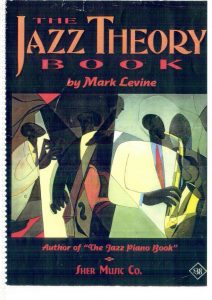
V. More Than Just Friends
“Just Friends” occupies a unique space in the jazz canon. It’s a bridge between eras – a Depression-era pop song reborn as a bebop crucible. Its enduring power lies in the robust and intriguing architecture of its chord progression, particularly the dramatic bridge, which offers a compelling challenge and a vast canvas for improvisational creativity. From the heartfelt resignation of Sam Lewis’s lyrics to the electrifying complexity unlocked by Charlie Parker, the tune embodies transformation. It demands technical mastery, harmonic understanding, and deep swing. Whether played as a burning tempo showcase, a medium-up swinger, or even (rarely now) recalling its ballad roots, “Just Friends” remains a vital, challenging, and deeply satisfying piece of the jazz repertoire – a standard that is truly much more than just a friend to jazz musicians and listeners alike. It’s a cornerstone.
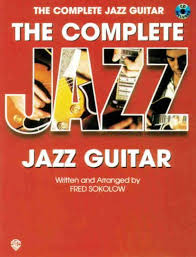
Just Friends-Wes Montgomery & Clark Terry
Browse in the Library:
Or browse in the categories menus & download the Library Catalog PDF:
